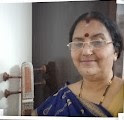Composition: Composer: Muthuswami DikshitarMuthuswami Dikshitar (Mudduswamy Dikshitar)[1] (IAST: muttusvāmi dīkṣitar, 24 March 1776 – 21 October 1835),
By India Post, Government of India - [1] [2], GODL-India, https://commons.wikimedia.org/w/index.php?curid=75028085
Raga: Natta JANYA OF Mela: 36, Chalanatta
Tala: Adi Type: Krithi
Arohana: S R3,[G2] G3 M1 P {D3]N2 N3 S || S Ru, Gu Ma Pa Du Nu S
Avarohana: S N3 P M1 G3 M1 R3,[G2] S || S Nu Pa Ma Gu Ma Ru, S
Arohanam: S R3 G3 M1 P D3 N3 S
Avarohanam: S N3 P M1 G3 M1 R3 S
Even though we say Jog is the hindustani equivalent of Nattai, unlike other Karnatik Hindustani equivalencies , both ragams have unique bhavam.
Nattai
The shatsruthi rishabam (or the 6 position of Rishabam) coincides with the second sruthi of Gandharam in the 22 sruthi space. This theevra rishabam gives the beauty to the ragam. The ragam gives a auspicious and a brisk mood to a concert even with the vivadhi nature of sruthis.
There are usually two versions of Nattai scale as we see from raga evolution. Nattai is a ubaya vakra sampoorna ragam as per Deekshitar paddathi. His krithis use D3 as well. We call that ragam as Chala Nattai in Govindacharya system now. Citing the other scale -
S R3 G3 M1 P N3 S and S N3 P M1 G3 M1 R3 S
Joghttps://raag-hindustani.com/Jog.html
The gandharam is the beauty of the ragam. The gandharam shows shades of the shatsruthi rishabam in Nattai but the way we handle the note in Jog is different. Gamakam is diminutive for gandharam in Jog.The ragam gives a more karunai oriented flavor. It evokes tranquility and bhakthi.
S G3 M1 P N3 S and S N2 P M1 G3 M1 G3 S G2 S
Hear a Nattai and a Jog and get the difference. Nattai is more madhyamakala and duritha kala ragam, while Jog shines in chowka kalam.
In Hindustani music, the Carnatic raga Nattai is most closely approximated by the raga Jog, though they are distinct ragas with unique characteristics. Nattai is known for its powerful, auspicious, and brisk mood and is characterized by the use of the shatshruti rishabha (a higher-pitched second note). Jog, while sharing similar notes, has its own unique emotional qualities and is often played at a slower tempo (chowka kalam) compared to the faster Nattai. Key Characteristics of Carnatic Nattai: - Auspicious Mood: Nattai is often used to begin a concert and creates a joyful and auspicious atmosphere.
- Melodic Structure: It is known for its emphasis on the Nattai rishabha (a high-pitched rishabha).
Key Characteristics of Hindustani Jog:
- Emotional Quality: Jog has a distinct emotional flavor that differs from Nattai.
- Notes and Structure: Jog's structure shares similarities with Nattai but treats the shatshruti rishabha differently.
Why They Are Considered Equivalents (but not identical):
- Mutual Counterparts: Nattai and Jog are considered mutual counterparts in their respective musical systems.
- Shared Notes: They share many of the same notes, making them similar in structure.
- Unique Character: The key difference is that while they share notes, the way these notes are handled and their specific "bhavam" (emotional essence) are unique to each raga.
===Lyrics in English===mahA gaNa patim manasA - rAgaM nATa - tALaM - catuSra Ekam
pallavi
mahA gaNa patiM manasA smarAmi
(madhyama kAla sAhityam)
vasishTha vAma dEvAdi vandita
samashTi caraNam
mahA dEva sutaM guru guha nutaM
mAra kOTi prakASaM SAntaM
(madhyama kAla sAhityam)
mahA kAvya nATakAdi priyaM
mUshika vAhana mOdaka priyam
variations -
rAgaM - nATa - cala nATa
pallavi - vandita - vanditaMhttps://youtu.be/0AgFsaU3WO4===Lyrics in Devanagari===
महा गण पतिम् मनसा - रागं नाट - ताळं - चतुश्र एकम्
पल्लवि
महा गण पतिं मनसा स्मरामि
(मध्यम काल साहित्यम्)
वसिष्ठ वाम देवादि वन्दित
समष्टि चरणम्
महा देव सुतं गुरु गुह नुतं
मार कोटि प्रकाशं शान्तं
(मध्यम काल साहित्यम्)
महा काव्य नाटकादि प्रियं
मूषिक वाहन मोदक प्रियम्
variations -
रागं - नाट - चल नाट
पल्लवि - वन्दित - वन्दितं
===Meaning===
Pallavi :
I think of Mahaganapati in my mind, the one worshipped by the sages like Vashishta and Vamadeva.
Samashti Charanam :
The son of Mahadeva; the one praised by guruguha,the one who shines forth like crores of manmathas, the placid one, the one who is fond of great literary works and plays, the one who has a rat for a vehicle, and one who is fond of modakas
kshEtra - tiruvArUr
Word by word meaning
Maha - Great
Ganapati - The Lord of the Ganas
manasA - in my mind
smarAmi - think of
Vasishta, VamadevAdi - (By) sages like Vasishta and Vamadeva
vandita - venerated
mahAdeva - Shiva
sutam - son
guruguha - the signature of the composer / By subrahmanya
nutam - praised by
mArakOti prakAsam - resplendent like crores of manmathas
SAntam - placid/calm













